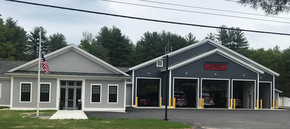Emergency Management Department

| Contact: | Ed Mical - Director Ron Piroso Jr - Deputy Director |
| Address: | 5 East Main Street PO Box 265 Warner NH 03278 |
| Phone: | 603-748-0560 603-239-1086 603-724-2042 |
| Email: | emd@WarnerNH.gov, demd@WarnerNH.gov |
| Hours: | By Appointment |
Mission Statement
Warner Emergency Management is responsible for initiating, coordinating, and sustaining an effective local response to disasters and emergency situations. The emergency management director's role is to ensure that all departments and participating partners are aware of their responsibilities and provide a basis for providing protective actions prior to, during, and after any type of disaster impacting the community and its residents.
Information and Links:
- Capital Area Public Health Network
- Centers for Disease Control and Prevention (CDC) Emergency Preparedness
- Community Preparedness
- Emergency Preparedness for Seniors
- Eversource: Outage map, Report Outages by calling 800-662-7764
- Functional Needs Survey
- Federal Emergency Management Agency (FEMA)
- FEMA Flood Map Changes Viewer
- Flood Hazard Zones
- Flood Preparedness Flyer
- Individuals with Disabilities or Access & Functional Needs Preparedness
- Kearsarge Mountain Road Emergency Access Route:
- GIS Summary, Central NH Regional Planning Commission - October 2019
- NH Flood Safety Awareness, Flood Preparedness Flyer
- NH Homeland Security & Emergency Management
- NOAA Weather Service
2024 Hazard Mitigation Plan Documents:
- Hazard Mitigation Plan
- Appendix A - Critical And Community Facilities
- Appendix B - Annual Plan Implementation and Eval Worksheets
- Appendix C - Meeting Information
- Appendix D - Plan Approval Documentation
- Appendix E - Photographic History of Hazard Events
- Appendix F - Hazard Mitigation and Sever Weather Event Survey
- Map 1 - Potential Hazards
- Map 2 - Past Hazards
- Map 3 - Critical Community Facilities
- Map 4 - Potential Hazards and Losses
General Emergency Preparedness
At Home Preparedness
- Water: at least 1 gallon, per person, per day
- Can opener (non electric)
- Battery powered radio
- ABC - type fire extinguisher
- Smoke detectors and carbon monoxide detectors
- Prescription medications
- Wired telephone (not cordless)
- Flashlight & battery powered lantern
- 3-day supply of canned or dried foods
- 3-day supply of baby food and formula
